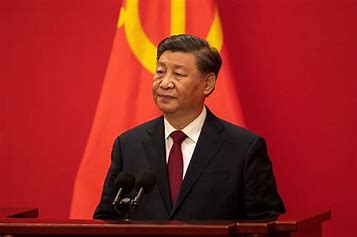A pause does not mean that Xi Jinping has abandoned his impossible objective of occupying more territory at the cost of India.
Prime Minister Narendra Modi and External Affairs Minister S. Jaishankar know that Xi Jinping has only pushed the Pause button and not the Stop button on aggressive action against India. Despite the agreement on disengagement reached between the two sides at long last after the Doklam incident. PLA soldiers marched into the Bhutanese territory in June 2017 in order to provide cover for a crew that was building a road across it. Such a move would have severely compromised Indian security, apart from trampling on the sovereign rights of Bhutan, which is why Prime Minister Narendra Modi sent troops into Doklam and stopped the Chinese road construction effort. After that came the Galwan clash between units of the PLA and the Indian Army which began in May 2020. At the cost of twenty precious lives of our jawans, and many times that number on the Chinese side, the effort to forcibly occupy Indian territory was abandoned by the PLA. However, clashes took place in 2021 and 2022 as well. While the Chinese side was building roads and creating military infrastructure on the side of the Line of Actual Control (LoAC) occupied by them, Beijing objected to the network of roads, tunnels and bridges that were being built on the Indian side since Prime Minister Modi came to office in 2014. They were not used to such assertiveness on the Indian side, and from that time onwards, saw Prime Minister Modi as an obstacle to their plans of occupying Arunachal Pradesh and parts of other states in India.
2023 saw a pause in such operations, and thus far, so has 2024. An important factor has been resolve on the Indian side to resist any effort at encroachment of national territory. Such a pause does not mean that CCP General Secretary Xi Jinping has abandoned his unwise plan of occupying more territory at the cost of India, but that during that period 2021-23, Xi Jinping saw his own personal popularity slide in the People’s Republic of China. His confidants, most of whom have a partiality
After fiascos such as the effort at Zero Covid in 2022 and the economic damage caused by reaction in democracies to PRC efforts at hollowing out their industry and absorbing the same have made Xi unpopular and vulnerable to mass civil unrest. His confidants say that only a military victory would succeed in replenishing the popularity of Xi. Aware that a large-scale military incursion into India may prove a disaster since PM Modi became PM and showed his mettle in Doklam, Xi appears to have changed his focus to Taiwan. The small but prosperous country famed for its technological prowess is now the target of psychological operations and kinetic encirclement intended to weaken the resolve of the island’s 26 million citizens to resist control by the PRC and making it another Hong Kong, a fully Chinese city in all but name. The name Hong Kong Special Autonomous Region has become an object of ridicule because there is zero autonomy in Hong Kong. Since the 1990s, Beijing has sought to make Shanghai and other cities within the PRC effective competitors to Hong Kong in foreign investment, and have succeeded. By 2019, Hong Kong was drained of any administrative freedom, and any Hong Kong citizen who dares to seek to restore its past status faces a long spell in prison. As a consequence of such repression, even those in Taiwan who favoured absorption by the PRC under the One Country Two Systems model used in Hong Kong in 1997 have become opposed to such linkages. At the same time, under President Tsai Ing-wen and now President Lai Ching-te, preparedness among Taiwanese to ward off such aggression is becoming stronger. Despite Xi warning that a vote for Lai in the last Taiwanese election would mean war with China, more than 40% of voters cast aside fear and voted for him and for the Vice-Presidential candidate Bikhim Hsiao. As a consequence, Xi is having to devote more and more attention and effort in his effort at snuffing out the freedom of the Taiwanese people. Hence the Pause button on India. Should Taiwan fall, India will soon become the next target, as will Japan and the US military presence in much of the waters of the Pacific, which is why the US and Japan have joined Australia to form the Quad along with India. As the leadership in all target countries know full well, Taiwan is a frontline state in the defence of the Indo-Pacific, which is why helping to ensure its freedom is crucial to the security of the rim of the Indo-Pacific.

